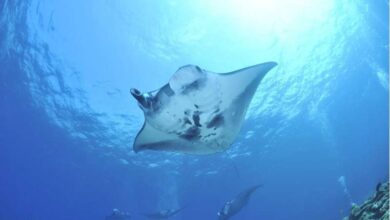
Artist's impression of an exoplanet near a red star. Image Credit: A. Smith, N. Madhusudhan / University of Cambridge
Technology The WorldNew, Promising Signs of Extraterrestrial Life
Astronomers have found signs of two chemicals on K2-18b, a planet beyond our Solar System that could have a biological origin, giving us hints that microbial life could exist elsewhere in the Universe.
“What we are finding at this point are hints of possible biological activity outside the solar system,” explains Nikku Madhusudhan, a Cambridge University astrophysicist and lead author of the study. “Frankly, I think this is the closest we have come to seeing a feature that we can attribute to life.”
In 2023, the James Webb Space Telescope detected methane and carbon dioxide on K2-18b, a rare exoplanet located 124 light-years away in the Leo constellation. Carbon-based molecules were found for the first time in the exoplanet’s atmosphere. This prompted astronomers to send the telescope back in 2024. This time, using a mid-infrared instrument to detect different wavelengths of light, it detected signs of dimethyl sulfide (DMS) and dimethyl disulfide (DMDS), long-considered “biosignatures” that indicate the presence of extraterrestrial life. On Earth, DMS and DMDS are produced only by life, mostly microscopic marine algae called phytoplankton. More than eight times the Earth’s mass and 2.5 times bigger, K2-18b orbits its star in a habitable Goldilocks zone, meaning that it’s neither too hot nor too cold to have liquid water. Its DMS and DMDS concentrations appear to be thousands of times stronger than levels on Earth. “This could be the tipping point, where suddenly the fundamental question of whether we’re alone in the universe is one we’re capable of answering.”



